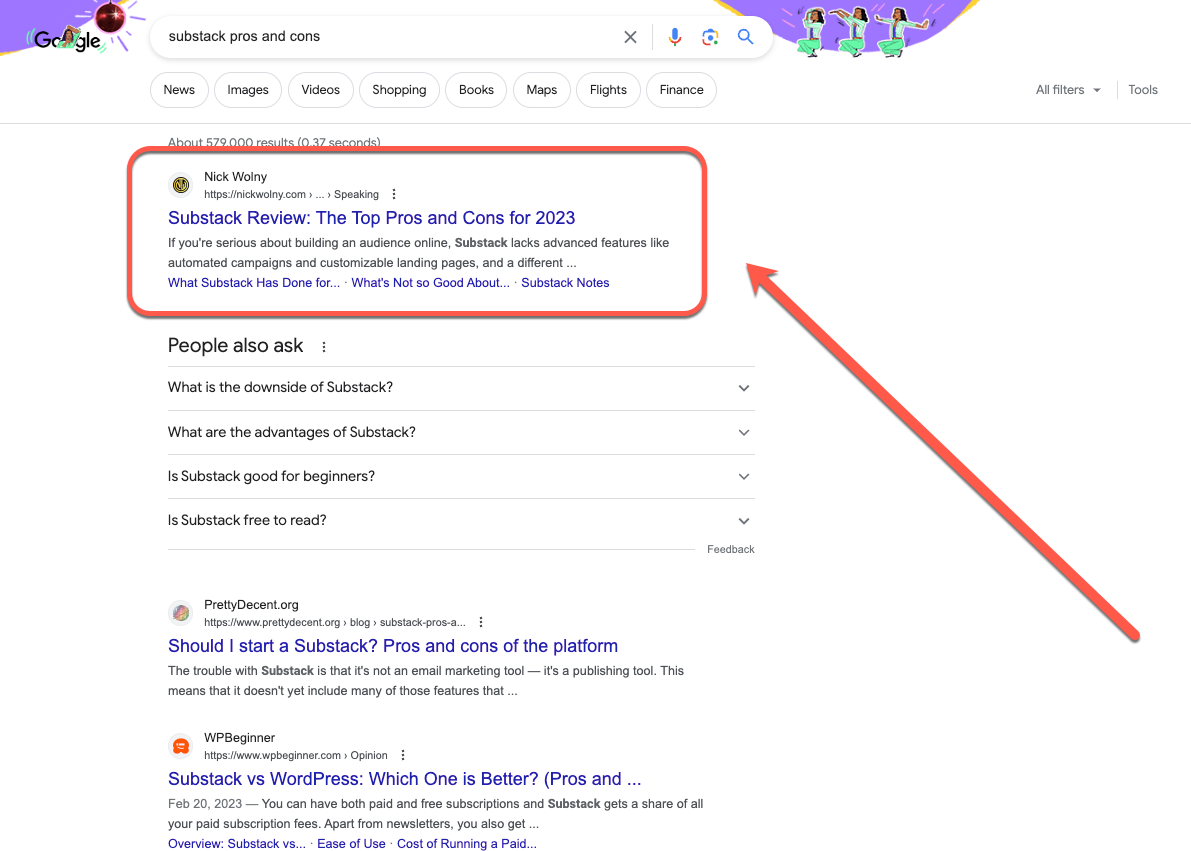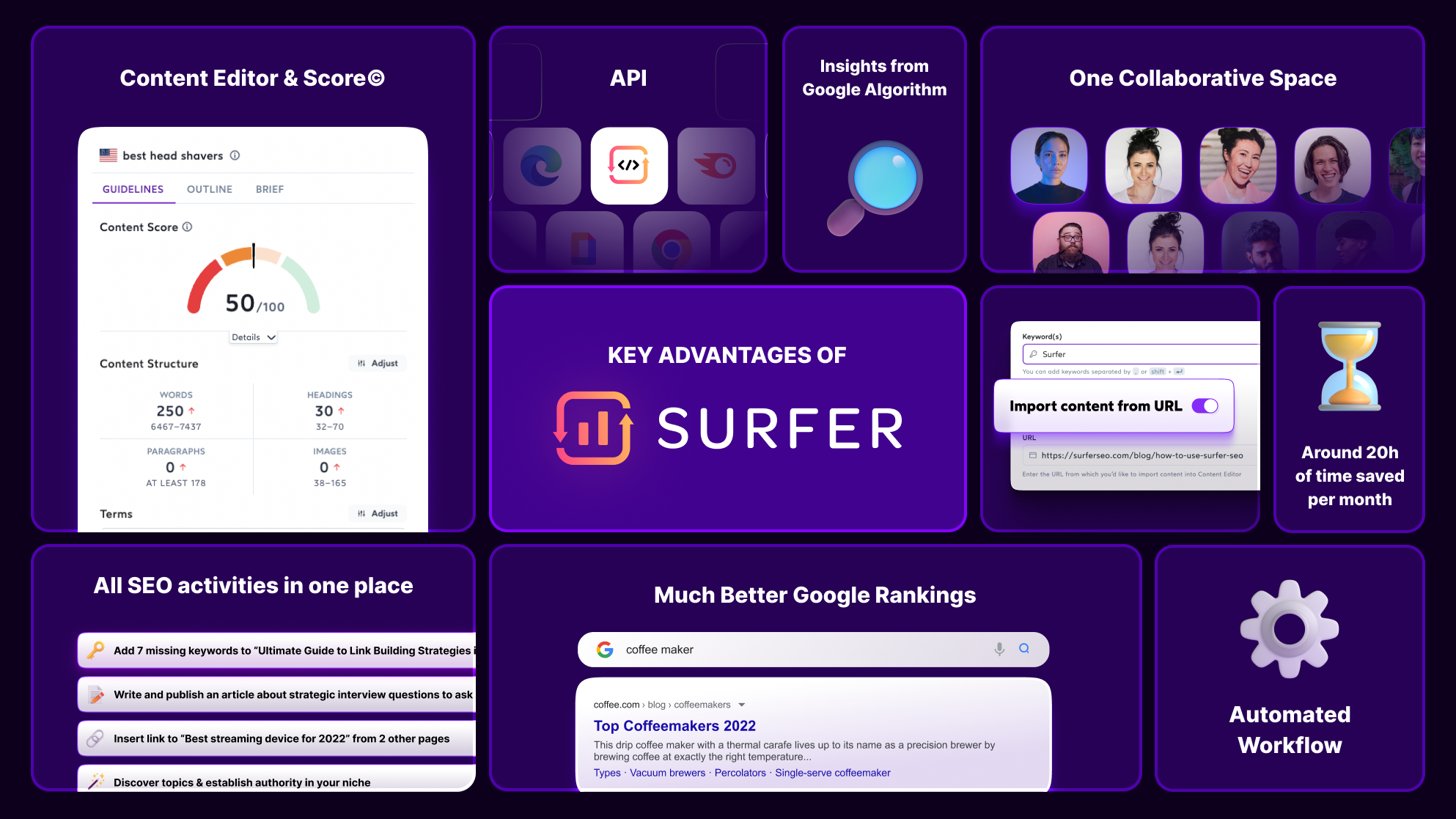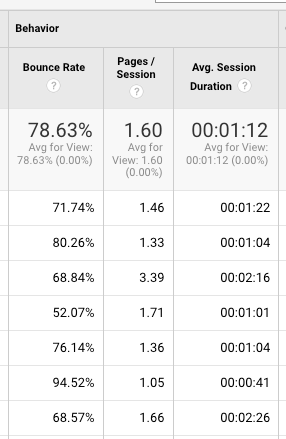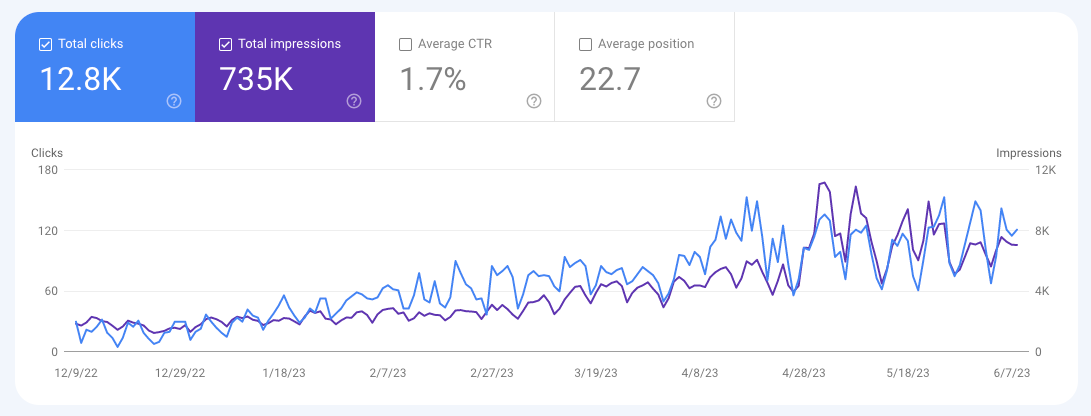If you publish a post, and no one sees it, did it even make a sound?
To impact or inspire people with our message, that message has to be seen in the first place. That’s why all professionals should know about the basics of SEO copywriting, the art and craft of publishing content that has the potential to appear in search engine results.
When you dial in your search engine optimization strategy, you bring more traffic from your target audience to your website. Here’s what to know.
Table of Contents
Why Care About Google Search and Search Engines?
When people search for something on the internet, they use a search engine like Google. The results show on what is called a search engine results page, or SERP.
The reality is that the top-ranking pages in a SERP get the majority of clicks from users. According to an analysis of over 5 million terms from Backlinko, the top three organic results get over 50% of all the clicks, and the top result gets a whopping 27% of the clicks. If you can crack these top rankings, you’ll see more organic traffic to your website.
A user’s search term is known as a keyword. By publishing posts that focus on a particular keyword, you increase the chances of appearing in search results when you users search for this primary keyword. Your post may also appear in searches for related keywords.
An SEO strategy has many different factors, but one of the most important factors is to regularly publish keyword-optimized content. Here are 10 tips to help you raise your SEO content writing game.
10 SEO Copywriting Tips
No. 1: Think About Search Intent.
When users do a search, they’re looking for web pages or news articles that will get their questions answered. There is keyword intent.
When creating content, think about how you can entice users. Answer their questions and give them plenty of information related to their organic search query.
No. 2: Prioritize Content That Ranks in Search Results.
It’s important to write about topics that have relevant keywords. If you sell jewelry, there’s no reason to write articles about traveling through a desert.
Search engine traffic is often considered to be very valuable traffic, because these users have intent. They are taking action. Moreover, content you published months or even years ago can continue to pull in new users each month.

By targeting the smaller-but-growing phrase “Substack Pros and Cons,” I'm able to grab the top spot in results, meaning I get way more clicks than if I had targeted something general like “email newsletter.”
No. 3: Be Mindful of Keyword Difficulty.
When selecting keywords, choose specific keywords that have decent monthly search volume, but are not too competitive. Competitive keywords that have lots of monthly searches will also have big websites vying for those precious top spots. Start with keywords that have between 500 and 5,000 searches per month, then work your way up.
Pro Tip:Ranking higher for keywords that have lower monthly search volume often results in more clicks. High rankings in search results are the most important factor.
No. 4: Leverage SEO Copywriting Tools.
It can be hard to develop an SEO perspective all by yourself. Consider investing in a keyword tool that can help you identify target keywords, improve keyword density, and implement SEO best practices.
I recommend SurferSEO (aff link) for SEO copywriting efforts. Tools like Surfer provide SEO tools that help you while writing content. The next time you sit down to write a blog post, ask yourself if you’re clear on the exact keyword phrase you want to target, and why.

If you’re not sure, it’s a sign you need to do more keyword research.
➡️ Related: Surfer SEO Review: The SEO Writing ‘Training Wheels’ You've Always Wanted
No. 5: Focus on Creating High Quality Content.
Even though this post is about SEO writing, that doesn’t mean your content can be garbage. Focus on creating quality content that users actually want to read and share.
When you do this, users will spend more time on your web page, and time on page is an important SEO metric. Time on page tells Google and other search engines that your content was compelling and valuable to readers.

A screenshot of time-on-page data in my Google Analytics account. My best-performing blog posts all had users browsing for a minute or more.
Since Google wants to give users the most quality options in organic search results, writing content that is rigorous and easy to understand is a great SEO copywriting strategy.
No. 6: Consider Targeting Long-Tail Keywords.
Long tail keywords are longer phrases.
“Exercise” would be a short-tail keyword. It’s general and very competitive.
“Training exercises to improve at pickleball” is a long-tail keyword. It’s much more specific, and likely has lower search volume. But these users are very intentional and interested.
By targeting long-tail keywords, your blog post is more likely to rank high in these smaller search pools, which can increase organic traffic.
No. 7: Aim for Longer Blog Posts.
Research shows that a blog post gets higher ranking and more shares when it is over 2,000 words in length.
This isn’t so much about the length as it is about the quality. If you have a 2,000-word blog post (Or in some cases, even more) about a topic, chances are you’re going deep. A longer post gives an SEO content writer more opportunities to incorporate related keywords.
Aspire to have your next blog post be deeper and more authoritative, rather than doing tons of short posts.
No. 8: Avoid Keyword Stuffing.
Keyword stuffing refers to a strategy in which an SEO copywriter tries to jam the keyword into a post as many times as possible. Search engines are smarter than this; if your content is just the target keyword being repeated a bunch of times, and not much else, Google will pick up on that.
Even if your content creation efforts are for SEO purposes, remember to write content that humans actually want to read.
No. 9: Measure Your Organic Ranking Over Time.
Don’t do all this work and then continue to fly blind!
Measure your search engine result placements over time. There are free tools like Ahrefs and Google Search Console that will help you see this information. If you have a post in the top 20 for certain keywords, it might be worth your time to brush up that post and see if you can rank even higher.
No. 10: Dial In Your Keyword Research Process.
Of course, all of these SEO copywriting tips are for naught if you don’t have a good keyword strategy in the first place. Set aside a couple of hours to do this important work.
What are users already searching for? Rather than try to invent a problem, look at what problems users are already trying to solve or figure out. Then, publish content that has a shot at getting in front of these people.

A screenshot from my Google Search Console. By switching my publishing strategy to focus more on SEO, I'm slowly building up my website traffic.
Copywriter SEO Frequently Asked Questions
Should I Only Have One Target Keyword?
For SEO copywriting, it’s best to have your blog post zero in on one specific keyword. Think about your user’s search intent and what answers they’re looking for, then aspire to give them this content in a quality way.
Can I Still Do Social Media Marketing?
Yes, and you should! Social media is a great way to get in front of new and existing followers alike. In the marketing world, search and social media strategies can complement one another nicely.
What Should All Blog Posts Have to Improve SEO?
Remember to include the basics: A clear title, meta descriptions, target keywords, meta tags and alt text on your images. These will all result in more traffic, without needing Google ads.
Shore Up Your SEO Copywriting Today
When you understand how information gets discovered on the internet, you’ll be able to take the internet by storm. Sprinkle more SEO writing into your marketing strategy and new readers will soon discover you on autopilot. ◆
Thanks For Reading 🙏🏼
Keep up the momentum with one or more of these next steps:
📣 Share this post with your network or a friend. Sharing helps spread the word, and posts are formatted to be both easy to read and easy to curate – you'll look savvy and informed
📲 Hang out with me on another platform. I'm active on Medium,Instagram, and LinkedIn – if you're on any of those, say hello.
📬 Sign up for my free email list. This is where my best, most exclusive and most valuable content gets published. Use any of the signup boxes on the site.
🏕 Up your writing game. Camp Wordsmith® is a content marketing strategy program for small business owners, service providers, and online professionals. Learn more here
📊 Hire me for consulting. I provide 1-on-1 consultations through my company, Hefty Media Group. We're a certified diversity supplier with the National Gay & Lesbian Chamber of Commerce. Learn more here.


